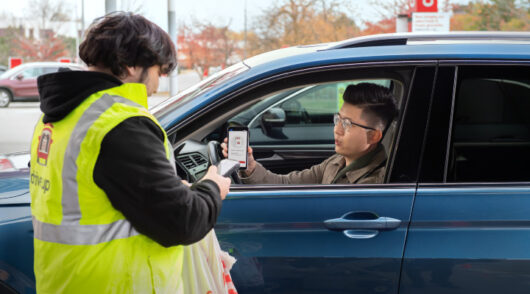Last week, Apple launched its first ‘spatial computer’ with the release of its Vision Pro headset. Spatial computing refers to the fusion of augmented reality (AR), virtual reality (VR) and mixed reality (MR), and it provides the foundation for experiences in the metaverse.
The device features visionOS, Apple’s first spatial operating system, and two ultra-high resolution displays that can transform any space into a personal movie theatre with a screen that feels 100 feet wide and an advanced Spatial Audio system.
Users can connect the Vision Pro to all of their devices, such as their laptop, smartphone and tablet, to create a Minority Report-esque setup where they can interact with all the screens around them.
But the real talking point of the Vision Pro is the price tag, US$3499, which seems to limit the product’s target audience to wealthy fans or corporate users.
A flop in the making?
There has been a long list of AR flops, from Google’s Glass to Magic Leap’s headset, and the knives are already out for Apple Vision Pro.
One of the main problems these devices faced in the past is that they were costly and their image quality was not remarkable. Another issue was that consumers struggled to find meaningful uses for them. Microsoft’s foray into this space with its Hololens in 2016 was marginally successful with 300,000 units sold.
While demand for AR headset has arguably increased, Apple is now competing with these early adopters – Magic Leap with its Magic Leap 2 headset, and Microsoft’s Hololens 2. The Hololens is already being used in the medical field for surgeries and the US Army reportedly ordered $21.9 billion worth of these headsets in 2021.
A nuanced perspective
Brittain Ladd, a strategy advisor for Shatranj Capital Partners, however, sees a big opportunity for Apple Vision Pro launch.
In his opinion, this device creates practical applications for bringing e-commerce to life, such as viewing products in 3D while shopping online, or browsing multiple retail sites at once in one visual.
One company that is already creating immersive 3D shopping experiences online is 345 Global, which is reportedly in discussions with a number of e leading retailers.
“I anticipate that the Apple Vision Pro will provide customers with the ability to go much deeper into retail shopping and selection due to the graphics. However, what 345 Global has created can be enjoyed using an iPhone, laptop or desktop without the need for goggles,” Ladd told Inside Retail.
Ultimately, he feels that the most important question that will determine the success or failure of Vision Pro is how many consumers will want to wear a headset on their face to have these virtual experiences.
Interaction is key
When it comes to the potential use cases for AR headsets in retail, “interact is the key word,” according to Ladd.
“Consumers will be able to evaluate different pairs of skis, for example, and then visually wear the skis on a virtual reality course. Consumers will be able to more easily compare and try on different products in the virtual world,” he said.
He thinks thatApple’s device could become a revenue generator for the company as it leverages third parties to design and market VR-based advertising campaigns. The goal will be to create experiences that are as immersive as possible.
In his mind, integrating Vision Pro with e-commerce platforms will be the next step to changing the way people shop. It will increase online shopping, and transactions will be completed seamlessly.
Ladd anticipates that the cost of Vision Pro will come down as the technology is adopted by more retailers.
“Tech companies like Apple know the value of a product like Vision Pro. Retailers understand that they must continue to provide innovative virtual shopping experiences and more clever store formats,” he noted.
For him, the future of shopping is virtual. Instead of going to a website to scroll through products, consumers will be able to fully immerse themselves in a virtual shopping experience from the comfort of their homes.
According to him, retailers that aren’t able to offer a similar experience will lose customers and revenue. In a few short years, he believes that the most popular stores will have a virtual presence with millions of products on offer.
“What will be real will be the need for companies that sell their products to ensure that there is a best-in-class real world logistics network in place to deliver the products that were ordered,” he concluded.






